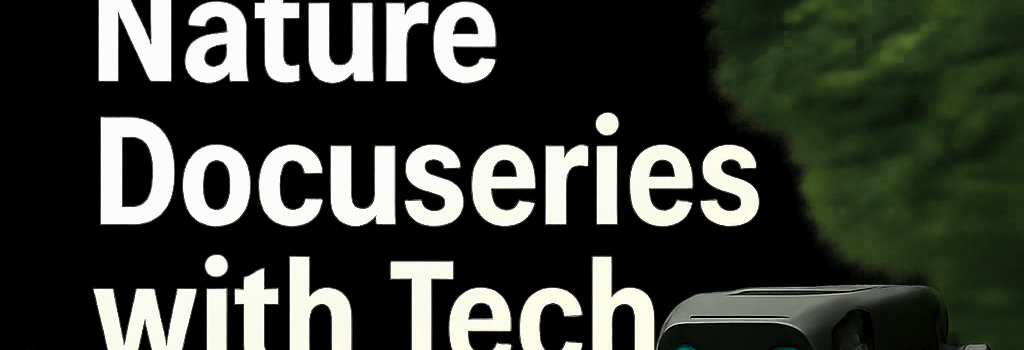Underdogs Revamps Nature Docuseries with Tech

When you hear National Geographic and think sweeping panoramas of lions stalking the savanna or whales breaching in slow motion, you’re in for a surprise. Underdogs, narrated by Ryan Reynolds, flips the script by spotlighting nature’s misfits—those weird, humble creatures you never knew you needed on screen. But there’s more under the hood than just snappy one-liners.
What makes Underdogs unique?
Executive produced by NatGeo’s in-house innovation team, the series leverages a suite of advanced technologies to bring lesser-known species into vivid focus:
- 8K Ultra HD Cinematography
Captured on RED Monstro 8K VV cameras, each episode delivers pixel-perfect clarity—even the tiny hairlike projections on a naked mole-rat’s snout are visible in gruesome detail. - AI-Powered Animal Tracking
Machine learning models running on AWS EC2 P4 instances analyze terabytes of drone footage in real time, automatically identifying and tagging individual animals by gait, pattern, and behavior. - Stabilized Drone Platforms
CineCorps X10 drones equipped with Movi Pro gimbals and DJI Ronin 4D systems allow ultra-smooth aerials in dense jungle canopies and subterranean caves. - Cloud-Native Post-Production
Footage is ingested into an AWS S3 data lake, then transcoded and color-graded at scale using Blackmagic DaVinci Resolve Studio on EC2 G5 instances for 4:4:4 color fidelity.
Behind the Scenes Technology
To capture the fleeting moments of the world’s most overlooked animals, NatGeo’s tech team built a custom Python pipeline that automates data wrangling:
- Ingest raw RED .r3d files via high-throughput Aspera transfers.
- Run AI inference to pre-tag species and behaviors using TensorFlow 2.8 with GPU acceleration (NVIDIA A100).
- Archive selects to S3 Glacier Deep Archive and retain hot edits on-premise for rapid iteration.
“We wanted to celebrate the underappreciated heroes of the natural world, and tech was the only way to bring them to life in this way,” says NatGeo senior wildlife cinematographer Jenna Morales.
Expert Opinions
Dr. Samuel Okoye, a behavioral ecologist at the University of Cape Town, praises the series’ approach: “By using AI to track individual tortoises and amphibians, the show uncovers micro-behaviors that traditional filming overlooks—like mating dances or territorial flashes—that are crucial for our research.”
Impact on Conservation Efforts
With each episode, Underdogs not only entertains but also informs conservation strategies:
- Real-time habitat mapping helps NGOs allocate resources to critical micro-ecosystems.
- Open data releases allow researchers worldwide to analyze annotated video clips via NatGeo’s GitHub repository.
- Public engagement spikes: social media bots automatically generate fact-sheets when viewers share clips, driving awareness for “weird” species.
Additional Context: The Future of Nature Storytelling
As streaming platforms compete for attention, the marriage of high-end hardware and cloud-driven AI pipelines signals a new era in wildlife documentaries. Expect more shows to adopt:
- Real-time VR/AR experiences that let viewers dive into a termite mound or a bat cave.
- Automated translation engines for global accessibility, powered by AWS Translate and custom LLMs.
- Interactive data dashboards, enabling citizens to follow migration patterns as they unfold.
With its blend of irreverent humor and state-of-the-art production, Underdogs proves that even nature’s smallest oddballs can take center stage—especially when you’ve got the tech to back them up.